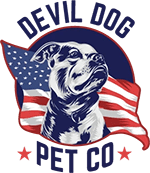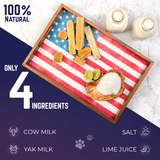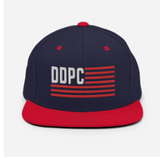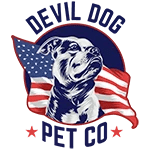Key Takeaways
- Fast eating can cause vomiting and bloating in dogs.
- Rapid food consumption increases the risk of choking hazards.
- Eating too quickly may lead to life-threatening gastric dilatation-volvulus (bloat), especially in large breeds.
- Slow feeding helps prevent health complications associated with fast eating.
- Managing your dog's eating speed is crucial for their overall well-being.
Table of Contents
- Why Fast Eating Is the Hidden Threat in Your Dog's Routine
- What Is a Slow Feeder Dog Bowl (and How Does It Work)?
- Why Use a Slow Feeder Dog Bowl? The Evidence-Backed Benefits
- Complete Comparison: Slow Feeder Dog Bowl vs. All Alternatives
- How to Select the Best Slow Feeder Dog Bowl: Owner's Checklist
- Slow Feeding in Practice: Step-by-Step Training Guide
- Product Selection Guide: Best Slow Feeding Bowls by Dog Type
- Beyond Bowls: Enrichment Toys & Advanced Feeding Solutions
- Practical Problem-Solving: Common Slow Feeder Issues
- Cleaning, Maintenance & Longevity
- Real-World Results: Success Stories from the Devil Dog Pack
Why Fast Eating Is the Hidden Threat in Your Dog's Routine
Your dog inhales their food in 30 seconds flat, then spends the next hour dealing with the consequences, vomiting, bloating, or frantically searching for more. This isn't just messy; it's dangerous. Fast eating triggers a cascade of health risks, from choking hazards to life-threatening gastric dilatation-volvulus (bloat), especially in large breeds.
The root causes run deeper than hunger. Dogs gulp food due to pack instincts, anxiety, boredom, or competition with other pets. Our dog Dexter used to demolish his kibble so fast we worried he'd choke, until we implemented slow feeding dog bowl solutions that transformed mealtime from a race into enrichment.
If your dog is a medium or large breed and tends to eat too quickly, consider using a slow feeding dog bowl designed for dogs 20-45 lbs or a slow feeding dog bowl for dogs 45-70 lbs to help reduce these risks.
The Stakes: Studies show dogs eating from slow feeders experience 70% fewer regurgitation episodes and significantly reduced bloat risk. Large, deep-chested breeds benefit most from controlled eating speeds.
Extreme Dog Leadership means taking ownership of every aspect of your dog's health, including how they eat. You wouldn't ignore a choking hazard in your home; don't ignore one at the food bowl.
Download the FREE 10-Step Dog Prep Guide
What Is a Slow Feeder Dog Bowl (and How Does It Work)?

A slow feeding dog bowl is a feeding vessel designed with built-in obstacles, ridges, mazes, or raised sections, that force dogs to work around barriers to access their food. Instead of dumping kibble straight down their throat, dogs must navigate puzzles, take smaller bites, and actually chew.
Common designs include maze patterns that create winding paths, raised ridges that separate food into smaller portions, and puzzle inserts that turn any standard bowl into a challenge. Materials range from food-safe plastic and stainless steel to flexible silicone that works for raw diets.
The mechanics are simple but effective: obstacles prevent gulping, promote natural foraging behaviors, and transform mealtime into mental exercise. A dog that normally finishes dinner in one minute might spend 5-10 minutes problem-solving their way through a maze bowl, exactly what their brain and digestive system need.
For more insights on choosing the right bowl for your dog's needs, check out our detailed guide on dog bowls.
Why Use a Slow Feeder Dog Bowl? The Evidence-Backed Benefits
Critical Health Protections
Bloat Prevention: Large breeds face up to 20% lifetime bloat risk. Slow feeders reduce air intake during eating, a primary bloat trigger. Deep-chested dogs like German Shepherds and Great Danes show measurable risk reduction when switched from standard bowls.
Digestive Efficiency: Proper chewing breaks down food particles, improving nutrient absorption and reducing undigested kibble in stool. Dogs eating slowly produce more saliva, which contains digestive enzymes that begin breaking down food before it hits the stomach.
Mental and Behavioral Gains
Brain Stimulation: Food puzzles activate problem-solving pathways, reducing destructive behaviors born from boredom. A 15-minute maze feeding session provides mental exercise equivalent to a 30-minute walk for many dogs.
Weight Management: Slower eating allows satiety signals to reach the brain before overconsumption occurs. Dogs using slow feeder bowls show improved portion control and reduced begging between meals.
Anxiety Reduction: Structured feeding routines with built-in challenges help anxious dogs focus energy productively rather than stress-eating or food guarding.
Complete Comparison: Slow Feeder Dog Bowl vs. All Alternatives
| Feeding Method | Speed Reduction | Mental Enrichment | Cleaning Ease | Food Compatibility | Best For |
|---|---|---|---|---|---|
| Standard Bowl | None | None | Excellent | All food types | Slow natural eaters |
| Slow Feeder Bowl | High (3-5x slower) | Moderate | Good | Dry kibble, some wet | Fast eaters, all breeds |
| Puzzle Feeders | Very High | Excellent | Challenging | Dry kibble mainly | Intelligent, food-motivated dogs |
| Snuffle Mats | High | Excellent | Difficult | Dry kibble, small treats | Natural foragers, anxious dogs |
| KONG/Stuffable Toys | Very High | High | Moderate | Wet food, treats, paste | Crate training, high-energy dogs |
How to Select the Best Slow Feeder Dog Bowl: Owner's Checklist

Choosing the right slow feeding dog bowl requires matching your dog's specific needs, not grabbing whatever's on sale. Start by assessing your dog's feeding style, does he inhale kibble in 30 seconds, delicately pick at meals, or guard food aggressively? Power chewers need stainless steel or thick silicone; gentle eaters can handle lighter plastic designs.
Size and breed matter more than most owners realize. Large, deep-chested breeds like German Shepherds benefit from wider, shallower maze patterns that prevent neck strain. Small dogs need appropriately scaled obstacles, oversized ridges frustrate toy breeds and can cause them to skip meals entirely. Flat-faced dogs require special consideration; choose bowls with gentle slopes rather than deep valleys that make breathing difficult while eating.
Devil Dog's Material Guide
Stainless Steel: Best for power chewers, dishwasher-safe, hypoallergenic. Choose 18/8 grade for durability.
Food-Grade Silicone: Ideal for raw feeders, travel-friendly, gentle on senior teeth. Look for BPA-free certification.
High-Quality Plastic: Budget-friendly for moderate chewers. Avoid cheap versions that harbor bacteria in scratches.
Consider your dog's diet type when selecting bowl depth and pattern complexity. Wet food requires easy-clean designs with smooth curves; dry kibble works with intricate mazes. If you mix in toppers like our yak cheese shavings or bone broth, choose bowls with varied depth levels that accommodate both liquid and solid components without creating mess.
Slow Feeding in Practice: Step-by-Step Training Guide
Most dogs adapt to slow feeders within 3-5 days when introduced properly. Start by placing a small amount of their regular food in the new bowl alongside their standard dish. Let them investigate and choose, never force the transition. Praise calm exploration and reward any interaction with the maze pattern, even if they don't eat immediately.
Gradually increase the food portion in the slow feeder while decreasing the amount in their regular bowl over one week. Monitor meal duration and stress signals. A successful transition shows increased eating time (3-8 minutes vs. 30 seconds) without whining, pawing, or food avoidance. Our dog Dexter initially ignored his maze bowl for two full days until we rubbed a small amount of bone broth on the ridges, instant engagement.
Troubleshoot common resistance by adjusting difficulty level, not abandoning the tool. If your dog flips the bowl, add a non-slip mat or choose a weighted design. Dogs who outsmart simple mazes quickly need more complex patterns or rotating between multiple puzzle feeders. Never let frustration build, if your dog stops eating for more than 10 minutes, simplify the challenge and rebuild confidence gradually.
Establish consistent mealtime leadership by maintaining the same location, schedule, and expectations. Place the slow feeder bowl down, give a "wait" command, then release with "okay" or "eat." This routine reinforces your role as pack leader while making the feeding tool part of their structured day rather than an obstacle to overcome.
Product Selection Guide: Best Slow Feeding Bowls by Dog Type
Large Breed Power Chewers
Best for: Dogs 50+ lbs who destroy regular bowls and eat aggressively
Stainless steel maze bowls with thick walls and wide, shallow patterns work best for these athletes. Look for designs with varied ridge heights that slow eating without causing neck strain. Anti-slip bases are essential, large dogs generate serious leverage when frustrated. The Neater Pet Brands Slow Feed Bowl handles 70+ lb dogs effectively with its heavy-gauge construction. For dogs who need extra durability and enrichment, antler dog chews can be a great addition to their routine.
Small Breed & Gentle Eaters
Best for: Dogs under 25 lbs or seniors with dental sensitivity
Silicone bowls with gentle, rounded obstacles provide the right balance of challenge and comfort. Avoid sharp edges or deep valleys that intimidate smaller mouths. The MateeyLife Slow Feeder offers appropriately scaled ridges for toy breeds while remaining easy to clean and dishwasher-safe.
Puppy-Specific Feeders
Best for: Growing dogs 8 weeks to 12 months
Choose adjustable or graduated difficulty feeders that grow with your pup. Start with minimal obstacles and add complexity as coordination improves. Silicone remains the safest material for teething puppies who might chew the bowl itself. The Outward Hound Fun Feeder offers multiple difficulty levels in puppy-appropriate sizes. If your puppy is teething, Puppy Antler Chew options can help satisfy their urge to chew safely.
| Dog Type | Best Material | Ideal Pattern | Key Features | Price Range |
|---|---|---|---|---|
| Large Power Chewer | Stainless Steel | Wide, shallow maze | Heavy base, thick walls | $25-45 |
| Small/Senior | Soft Silicone | Gentle ridges | Rounded edges | $15-30 |
| Puppy | Silicone | Adjustable maze | Flexible, easy-clean | $12-25 |
Beyond Bowls: Enrichment Toys & Advanced Feeding Solutions

While slow feeding dog bowls solve the speed problem, combining them with additional enrichment tools creates a comprehensive feeding strategy that addresses boredom, anxiety, and natural foraging instincts. KONG Classic toys stuffed with wet food and frozen overnight provide 15-30 minutes of focused licking and problem-solving. For maximum challenge, stuff a split antler with yak cheese, the combination forces dogs to work for every bite while providing dental benefits.
Snuffle mats excel for scatter feeding and work particularly well for dogs who've mastered their maze bowls too quickly. Hide kibble throughout the fabric strips to engage natural hunting behaviors that bowls can't replicate. LickiMats serve wet food feeders best, spread pâté, bone broth, or pureed vegetables across the textured surface for extended licking sessions that promote calm behavior.
DIY Slow Feeding Solutions
Muffin Tin Method: Place kibble in muffin cups with tennis balls on top. Dogs must remove balls to access food.
Towel Roll Technique: Spread food on a towel, roll it up, and let dogs unroll to find kibble scattered throughout.
Ice Cube Tray Freeze: Mix wet food with water in ice cube trays for portion-controlled frozen treats.
Layer feeding challenges by rotating tools rather than using everything simultaneously. Monday might feature the maze bowl with breakfast, Wednesday could introduce the frozen KONG, and Friday brings out the snuffle mat. This rotation prevents habituation while maintaining mental stimulation. Our dog Dexter responds best to a weekly schedule that alternates between his stainless steel maze bowl and a frozen yak chew puzzle, variety keeps him engaged without overwhelming his routine.
For more creative enrichment ideas and training tips, explore the devil dog blog.
Practical Problem-Solving: Common Slow Feeder Issues
Bowl flipping ranks as the most frequent complaint from new slow feeder users. This behavior typically indicates frustration with difficulty level rather than defiance. Add a rubber feeding mat with raised edges, or switch to a weighted stainless steel design that can't be easily overturned. For persistent flippers, try the gradual introduction method, start with food scattered around the bowl's exterior, then gradually move portions into the maze pattern.
Dogs who refuse their new slow feeder bowl entirely need confidence building, not force. Place high-value treats like freeze-dried liver or small pieces of yak chew in the easiest-to-reach sections. Allow them to succeed quickly, then gradually increase challenge level over several days. Never withhold meals to force compliance, hungry dogs make poor learners and may develop negative associations with feeding time.
Material allergies present as persistent scratching, face rubbing, or digestive upset after meals. Switch from plastic to stainless steel or food-grade silicone immediately. Some dogs react to specific plastic compounds or dyes used in manufacturing. When in doubt, choose uncoated stainless steel, it's hypoallergenic and eliminates variables while you identify the trigger.
Excessive wear or damage signals either poor product quality or mismatched dog-to-bowl pairing. Cracks in plastic bowls harbor bacteria and must be replaced immediately. Deep scratches in any material create cleaning challenges that compromise hygiene. Power chewers who destroy bowls within weeks need stainless steel exclusively, no exceptions for convenience or cost savings. For more on the pros and cons of different chew materials, read are antlers for dogs a good idea.
Cleaning, Maintenance & Longevity
Daily cleaning prevents bacterial buildup in maze patterns where food particles lodge. Rinse immediately after each meal, then hand-wash with hot water and dish soap, using a bottle brush to reach deep crevices. Dishwasher-safe bowls can go on the top rack, but inspect regularly for warping or cracking that high heat can cause over time.
Weekly deep cleaning involves soaking the bowl in a diluted bleach solution (1 tablespoon per gallon of water) for 10 minutes, followed by thorough rinsing. This eliminates biofilm formation that regular washing might miss. For dogs with sensitive stomachs or allergies, substitute white vinegar for bleach, equally effective against bacteria without chemical residue concerns.
Storage matters more than most owners realize. Never stack wet bowls or store them in closed containers while damp. Air-dry completely before putting away to prevent mold growth. Outdoor feeding requires extra vigilance, bring bowls inside after meals and inspect for damage from weather exposure or wildlife interference.
Replace bowls showing deep scratches, cracks, or persistent odors despite proper cleaning. A quality stainless steel slow feeding dog bowl should last 2-3 years with daily use; silicone versions typically need replacement after 12-18 months depending on your dog's chewing habits. When you wouldn't eat from the bowl yourself, it's time for a new one. For further scientific evidence on slow feeder effectiveness, see this peer-reviewed study.
Real-World Results: Success Stories from the Devil Dog Pack

Sarah's 85-pound German Shepherd mix went from 45-second meal demolition to 8-minute controlled eating after switching to a stainless steel maze bowl. "The vomiting stopped completely within a week," she reports. "He lost 6 pounds over three months just from eating slower and feeling full naturally." The key was sizing up to an extra-large bowl despite manufacturer recommendations, bigger dogs need more space to work comfortably.
For 12-year-old rescue Bella, a senior Labrador with worn teeth, the solution came through silicone flexibility rather than rigid obstacles. Her owner, Mike, tried three different plastic bowls before discovering that soft ridges accommodated her sensitive gums while still slowing her eating from 30 seconds to 5 minutes. "She actually enjoys mealtime now instead of rushing through it," he notes.
Download the FREE 10-Step Dog Prep Guide
Frequently Asked Questions
How does a slow feeder dog bowl help prevent health issues like vomiting, choking, and bloat in dogs?
Slow feeder bowls create obstacles that force dogs to eat more deliberately, reducing gulping and large bites. This controlled eating pace lowers the risk of choking, minimizes regurgitation, and helps prevent life-threatening bloat by promoting better digestion and airflow.
What are the different designs and materials used in slow feeder dog bowls, and how do they work to slow down a dog's eating?
Slow feeder bowls come in various designs like ridges, mazes, or raised sections made from durable plastic, silicone, or stainless steel. These features create physical barriers that make dogs work around them to access food, naturally slowing down their eating speed.
Which slow feeder dog bowl is best suited for my dog's size and breed, especially for medium to large dogs prone to fast eating?
Choose a slow feeder bowl sized to your dog's weight and jaw size, medium bowls for dogs 20–45 lbs and larger bowls for dogs 45–70 lbs. For medium to large dogs prone to fast eating, pick bowls with deeper mazes or more complex patterns to effectively slow their feeding pace.
What practical steps can I take to train my dog to eat slower using a slow feeder bowl, and how do I maintain and clean these bowls effectively?
Introduce the slow feeder gradually, encouraging calm behavior and rewarding small bites. Start with short supervised sessions, then increase duration as your dog adapts. Clean bowls regularly with warm soapy water or dishwasher-safe cycles to prevent buildup and maintain hygiene.






